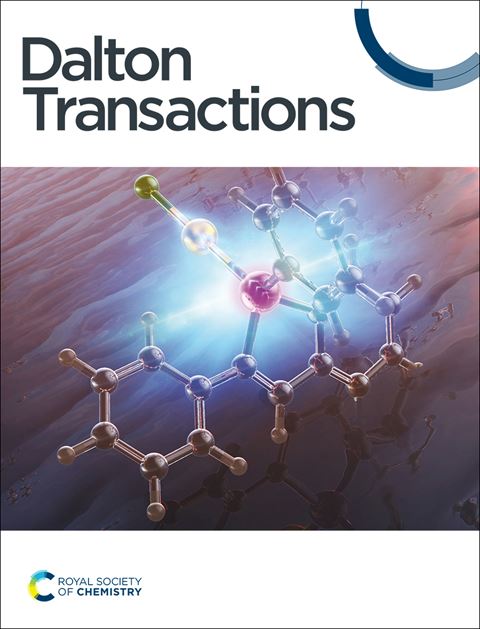富含纳米间隙的超薄2D PdAg合金介孔纳米片可促进电催化CO2还原生成甲酸盐
IF 3.5
3区 化学
Q2 CHEMISTRY, INORGANIC & NUCLEAR
引用次数: 0
摘要
钯基催化剂是一种独特的有前途的催化剂,它能够在CO2电还原过程中选择性地产生接近平衡电位的甲酸盐,但在高过电位下仍然存在co中毒的问题。实现优异的整体性能,包括高甲酸选择性、宽电位窗口和高抗co中毒能力,仍然是一个重大挑战。在此,我们报道了表面活性剂模板合成超薄的二维(2D)二元PdAg合金介孔纳米片,这些纳米片在相互连接的分支之间富集了纳米间隙,并具有调节的原子化学计量,用于高效地还原CO2以生成甲酸。这些先进的结构特征使催化剂能够暴露出丰富的活性位点,而合金中适当的Ag浓度通过从Ag到Pd的电子转移有效地调整了Pd的电子结构。从结构和电子的角度产生的协同效应有助于极大地促进电催化CO2还原成甲酸。结果表明,与可逆氢电极相比,优化后的Pd4Ag1纳米片在−0.1 V下的甲酸faradac效率最高达99.4%,并且具有400 mV的宽电位窗口,对CO2还原具有高甲酸选择性(> 90%)。此外,详细的电化学分析共同证明了Pd4Ag1纳米片表现出减弱的CO结合和CO中毒。这项工作为精心设计和构建高效的甲酸靶向催化剂提供了一条可行的途径。本文章由计算机程序翻译,如有差异,请以英文原文为准。
Ultrathin, 2D PdAg alloy mesoporous nanosheets enriched with nanogaps promote electrocatalytic CO2 reduction to formate
Pd-based catalysts have emerged as one unique class of the promising catalysts capable of selectively producing formate near the equilibrium potential during CO2 electroreduction, but still suffering from CO-poisoning at high overpotentials. Achieving an excellent overall performance, including a high formate selectivity, a wide potential window, and a high anti-CO-poisoning ability, remains a significant challenge. Herein, we report the surfactant-templated synthesis of ultrathin, two-dimensional (2D) binary PdAg alloy mesoporous nanosheets enriched with nanogaps among interlinked branches with regulated atomic stoichiometry for highly efficient CO2 reduction to formate. These advanced structural features enable the catalysts to expose abundant active sites, whereas a proper Ag concentration within alloy effectively tailors the electronic structure of Pd through the electron transfer from Ag to Pd. The synergy effect resulting from the structural and electronic perspectives contributes to greatly promoting electrocatalytic CO2 reduction to formate. As a result, the optimized Pd4Ag1 nanosheets display a maximal formate faradic efficiency of 99.4% at −0.1 V versus reversible hydrogen electrode and exhibit a wide potential window of 400 mV for high formate selectivity (>90 %) toward CO2 reduction. Moreover, the detailed electrochemical analyses collectively evidence that Pd4Ag1 nanosheets exhibit attenuated CO binding and CO poisoning. This work highlights a feasible avenue for elaborate designing and constructing efficient formate-targeted catalysts.
求助全文
通过发布文献求助,成功后即可免费获取论文全文。
去求助
来源期刊

Dalton Transactions
化学-无机化学与核化学
CiteScore
6.60
自引率
7.50%
发文量
1832
审稿时长
1.5 months
期刊介绍:
Dalton Transactions is a journal for all areas of inorganic chemistry, which encompasses the organometallic, bioinorganic and materials chemistry of the elements, with applications including synthesis, catalysis, energy conversion/storage, electrical devices and medicine. Dalton Transactions welcomes high-quality, original submissions in all of these areas and more, where the advancement of knowledge in inorganic chemistry is significant.
 求助内容:
求助内容: 应助结果提醒方式:
应助结果提醒方式:


